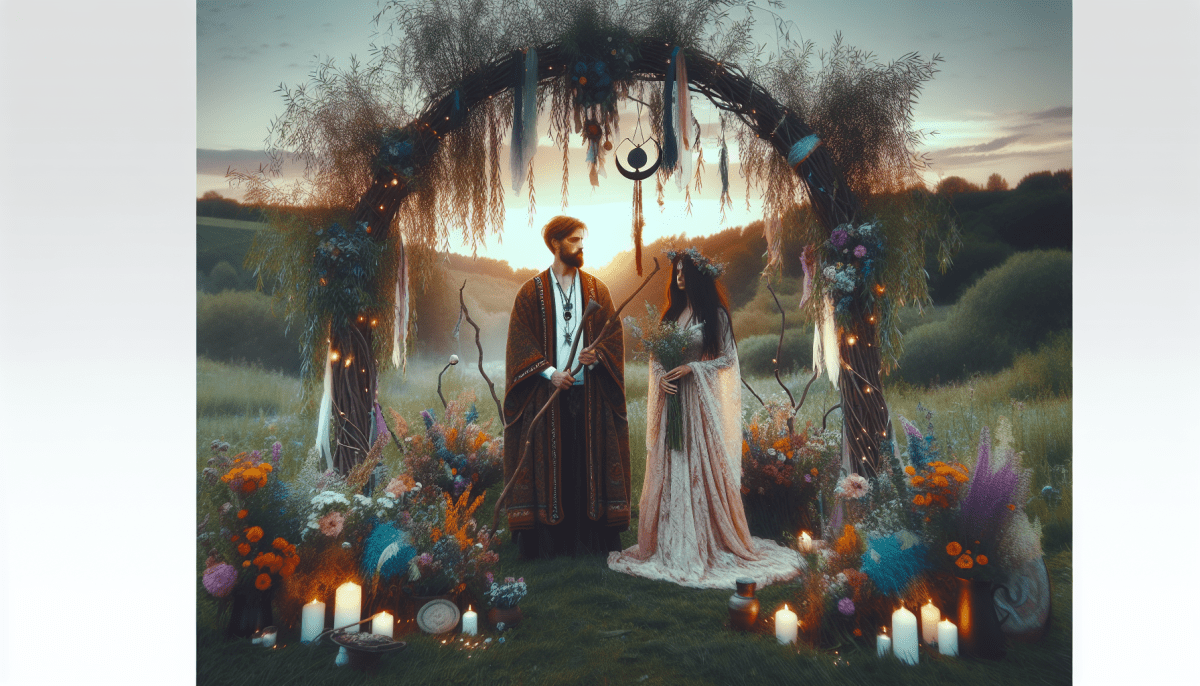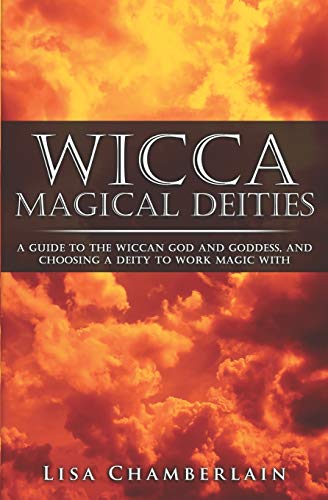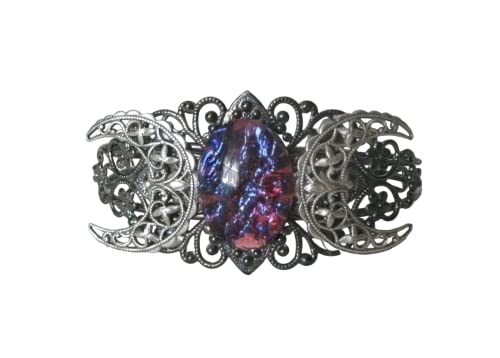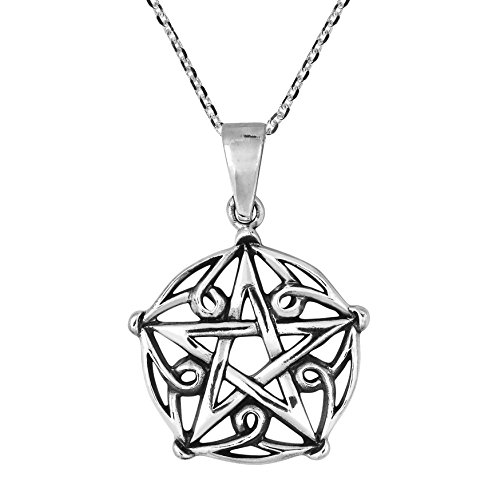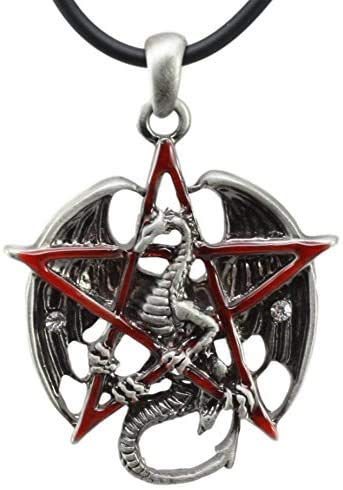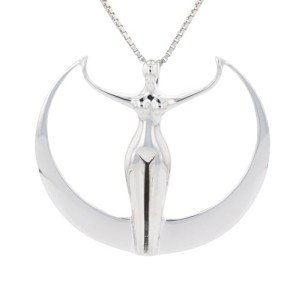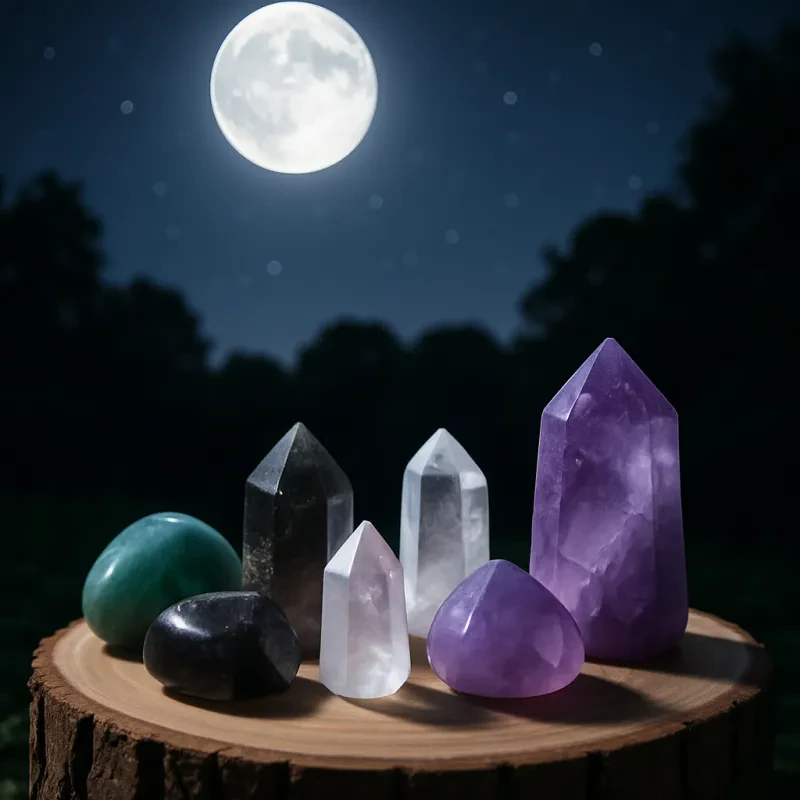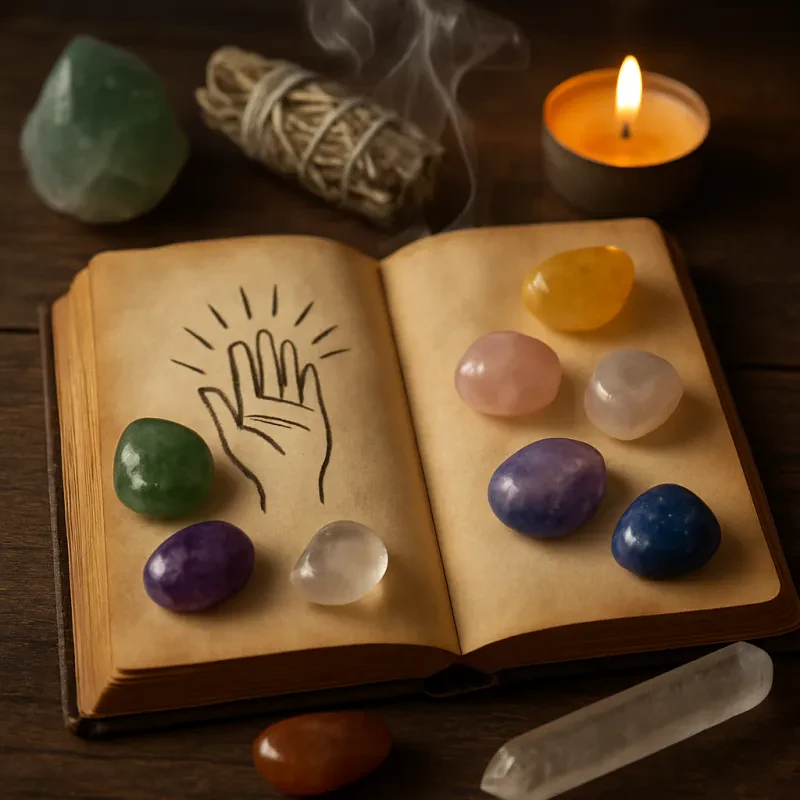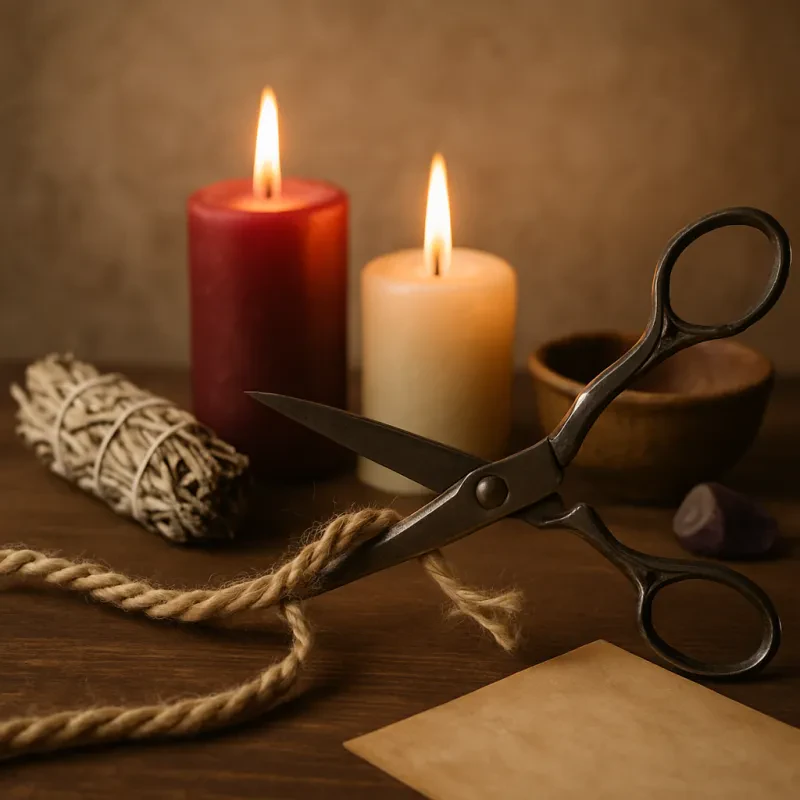Unveiling the Mystical Allure: Exploring Pagan Wedding Ceremony Traditions
In an era where individuality reigns supreme, couples increasingly seek ways to infuse their nuptial celebrations with personal flair and deeper spiritual resonance. Amidst this quest for authenticity, the ancient rituals of Paganism have emerged as a captivating alternative, offering a tapestry of rich traditions that harmonize with nature's rhythms. Pagan wedding ceremony traditions have witnessed a remarkable renaissance, beckoning modern couples to embrace the mystique of the past while forging their sacred union.
Exploring the Roots: Understanding Paganism
To truly appreciate the significance of pagan wedding ceremony traditions, one must delve into the essence of Paganism itself. This umbrella term encompasses diverse nature-centric spiritual paths, each with unique nuances and origins. At its core, Paganism is a modern reimagining of the ancient European traditions that predate the advent of Christianity, Judaism, and Islam.
While the term 'Pagan' was once employed derogatorily to refer to those outside the Abrahamic faiths, contemporary Pagans have reclaimed and redefined this label, imbuing it with a sense of pride and reverence for the natural world. Paganism's resurgence in recent decades has been fueled by a yearning for a deeper connection with the earth and a desire to honor the cyclical rhythms of nature.
The Tapestry of Pagan Paths 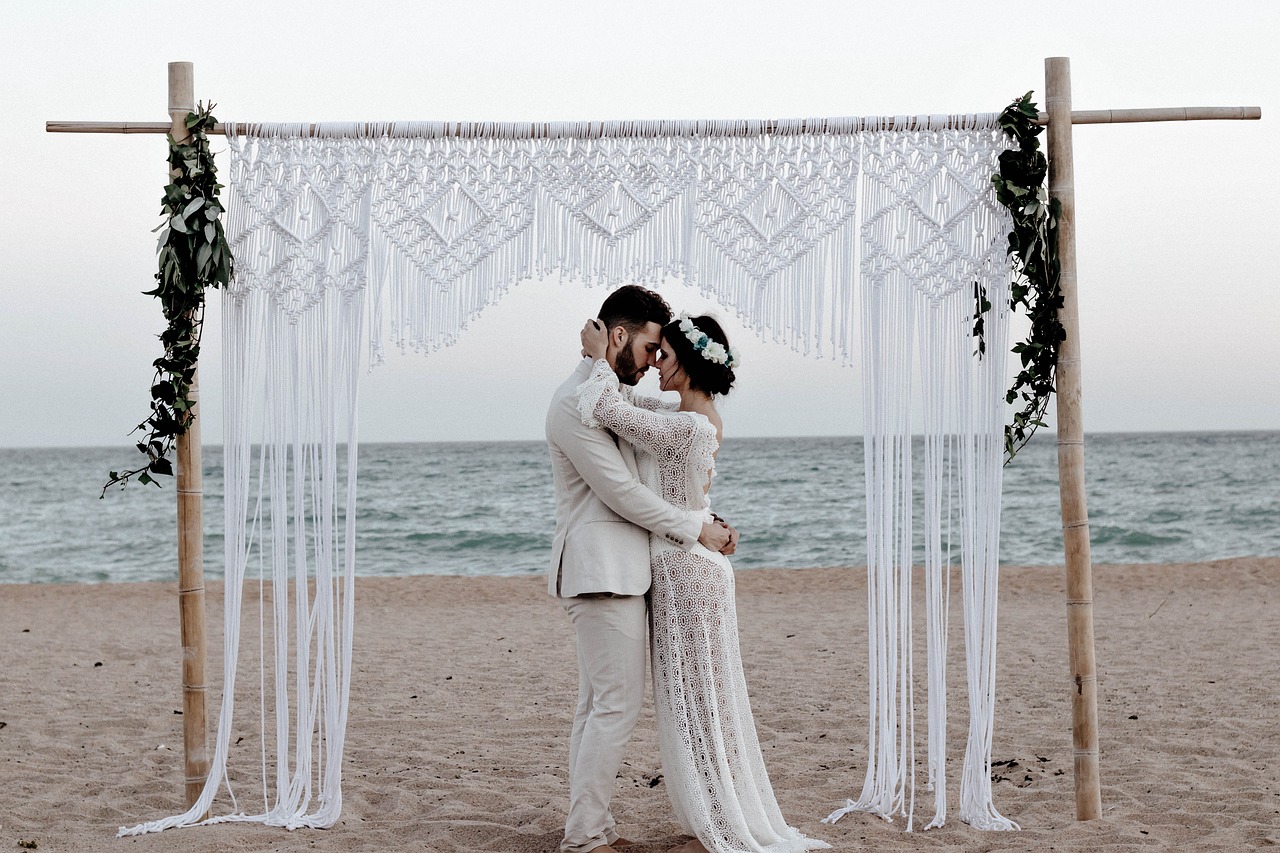
Within the vast tapestry of Paganism, several distinct paths have emerged, each with its unique ceremonies and rituals. While the specifics may vary, these traditions share a common thread of reverence for the natural world and a belief in the interconnectedness of all life.
- Wicca: Arguably the most well-known branch of modern Paganism, Wicca is a nature-based religion that celebrates the changing seasons and moon cycles. Wiccan weddings, often called 'handfastings,' are steeped in symbolism and rituals that honor the divine feminine and masculine energies, making a wedding a significant experience.
- Druidry: Rooted in the ancient Celtic traditions, Druidry emphasizes a deep connection with the natural world and a reverence for the spirits that dwell within it. Druid weddings often take place outdoors, surrounded by the majesty of nature, and incorporate elements such as storytelling and poetry, reflecting the rich heritage of Celtic culture.
- Asatru: Derived from Norse mythology, Asatru is a reconstructionist tradition that honors the ancient gods and goddesses of the Viking pantheon. Asatru weddings are steeped in the rich traditions of the Norse people, often featuring elements such as ceremonial swords, drinking horns, and feasting.
These are but a few examples of the diverse paths that fall under the umbrella of Paganism, each offering its own unique perspective and traditions regarding wedding ceremonies.
The Sacred Circle: Setting the Stage
Regardless of the specific Pagan path being followed, one common thread that weaves through many pagan wedding ceremony traditions is the creation of a sacred circle. This ritual space, often delineated by physical markers or energetic boundaries, symbolizes the union between the couple and the natural world.
The process of casting the circle typically involves invoking the four elemental directions (earth, air, fire, and water) and the deities or spiritual forces that hold significance for the couple. This act of consecration creates a sacred container within which the wedding ceremony can unfold, imbuing the space with a sense of reverence and mysticism.
Within this hallowed circle, couples may incorporate various symbolic elements, such as altars adorned with candles, crystals, or offerings to the deities. The circle may be decorated with natural elements like flowers, branches, or stones, further emphasizing the connection between the couple and the natural world.
The Handfasting Ritual: Tying the Knot, Literally
One of the most iconic and widely recognized pagan wedding ceremony traditions is the handfasting ritual. This ancient practice, believed to have its roots in Celtic and Germanic cultures, involves the symbolic binding of the couple's hands with a cord or ribbon, representing their union and commitment to one another.
The handfasting ceremony typically begins with the couple standing face to face, their hands joined together. The officiant, often a priestess or priest, carefully wraps a cord or ribbon around their joined hands, reciting blessings and invocations that imbue the ritual with more profound spiritual significance.
The colors and materials used for the handfasting cord can hold symbolic meaning, with each hue representing different qualities or intentions for the couple's union. For example, red may symbolize passion and vitality, while green represents growth and fertility. Some couples may incorporate charms, beads, or other meaningful objects into the cord, further personalizing the ritual.
Once the handfasting is complete, the couple may leave the cord in place for a symbolic period, such as a year and a day, before removing it and transitioning into a more permanent union. Alternatively, some couples may keep the cord as a reminder of their sacred vows.
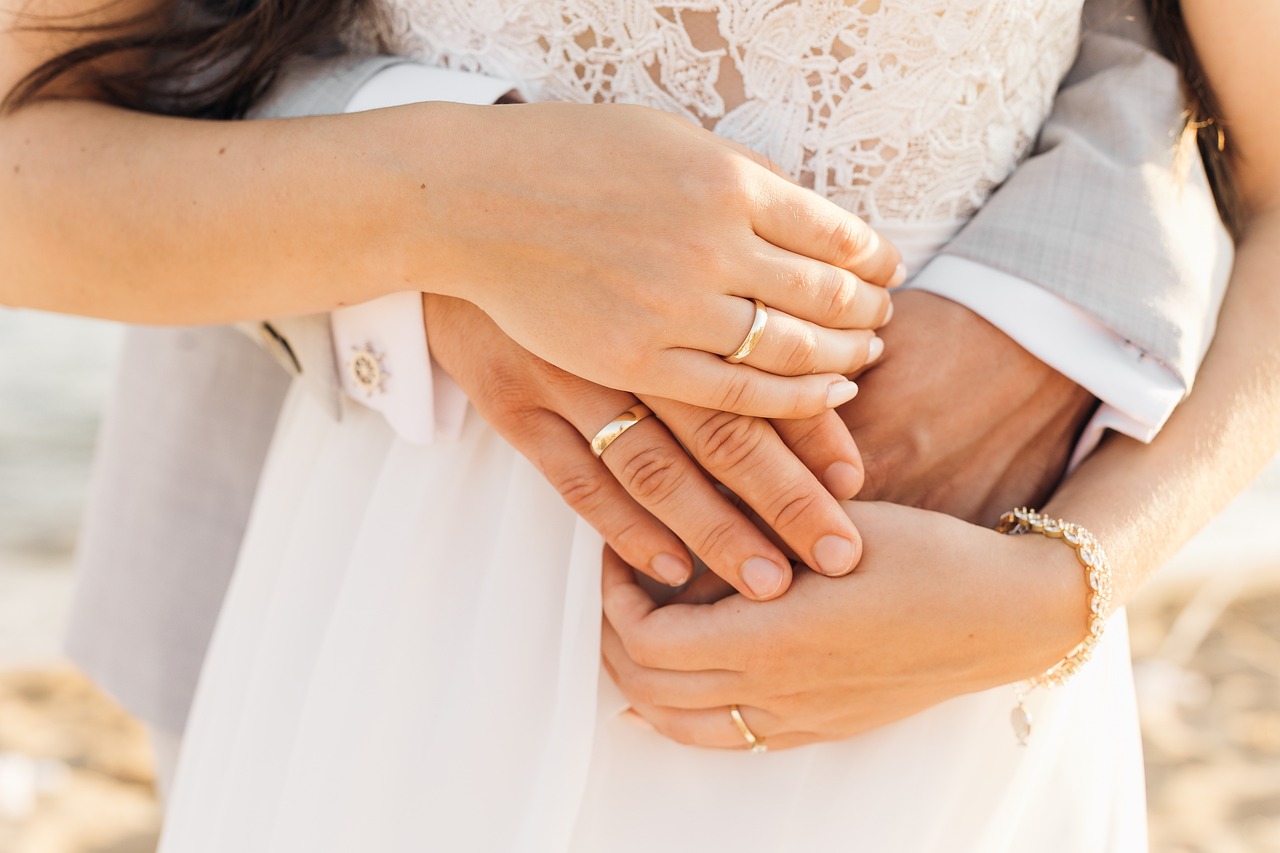
Jumping the Broom: A Symbolic Leap into Unity
Another captivating pagan wedding ceremony tradition is 'jumping the broom.' With roots in various cultures and traditions, this ritual symbolizes the couple's leap into a new life together, leaving behind their individual paths and embracing a shared journey. The jumping-the-broom wedding tradition is a powerful symbol of unity and commitment.
During this ritual, a broom (often adorned with ribbons, flowers, or other decorative elements) is placed horizontally on the ground in front of the couple. After exchanging vows and completing the handfasting ceremony, the newlyweds join hands and jump over the broom, signifying their transition into a new phase of life as a united couple.
The origins of this tradition are diverse. Some trace it back to ancient Celtic practices, while others attribute it to African and African-American cultures. Regardless of its roots, jumping the broom has become a powerful symbol of unity and commitment, often accompanied by cheers and celebrations from the gathered guests.
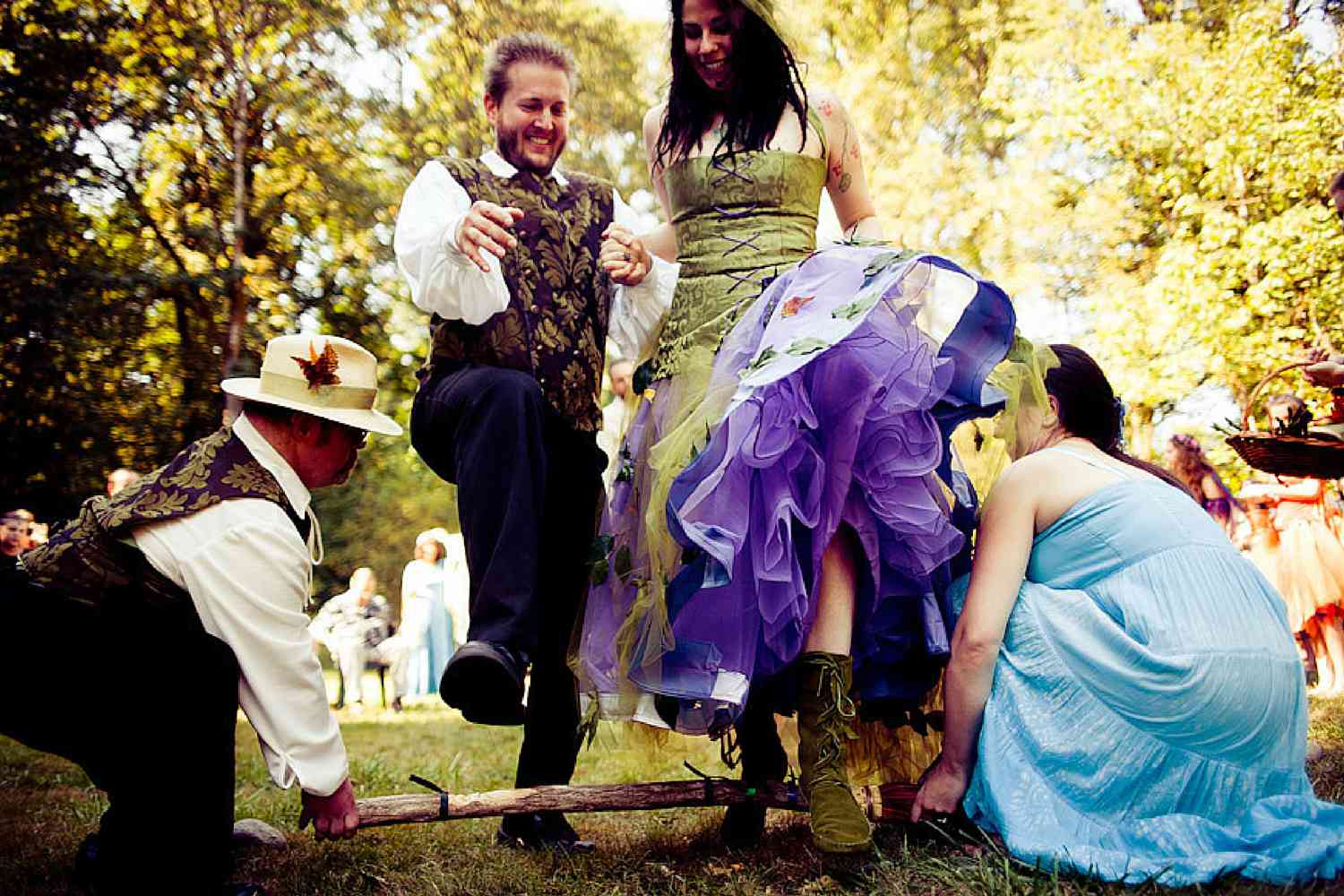
Nature's Embrace: Outdoor Ceremonies and Sacred Spaces
One of the defining characteristics of pagan wedding ceremony traditions is the emphasis on connecting with the natural world. Many couples hold their ceremonies outdoors, surrounded by the beauty and majesty of nature, whether in a lush forest clearing, a secluded beach, or a verdant meadow.
The selection of the ceremony location is often imbued with deep symbolism and personal significance. Some couples may choose a site with particular spiritual or energetic resonance, such as ancient standing stones or sacred groves. Others may opt for a location with special meaning in their relationship, such as where they first met or shared a significant moment.
Within these natural settings, couples may incorporate various elements that further enhance the connection to the earth and the cycles of nature. For example, they may exchange vows during a particular phase of the moon or align their ceremony with the changing seasons or celestial events.
Elemental Blessings: Honoring the Forces of Nature
In many pagan wedding ceremony traditions, the four classical elements—earth, air, fire, and water—play a significant role, symbolizing the fundamental forces that shape and sustain life. Couples may choose to incorporate these elemental energies into their ceremonies in various ways, creating a harmonious balance and honoring the interconnectedness of all things.
- Earth: The element of earth represents stability, fertility, and grounding. Natural materials such as stones and crystals may be honored using earth soil. Some couples may choose to incorporate a soil unity ritual, combining earth from their respective places of birth or significant locations, symbolizing the merging of their roots.
- Air is associated with communication, intellect, and freedom. It can be acknowledged through the use of feathers, incense, or the ringing of bells. Couples may choose to recite their vows while facing the direction associated with air, symbolizing the importance of open and honest communication in their union.
- Fire represents passion, transformation, and purification. The element of fire is often honored through the lighting of candles or the incorporation of a ceremonial fire pit. Some couples may jump over a small fire as part of their ceremony, symbolizing their commitment to igniting and nurturing the flames of their love.
- Water symbolizes emotions, intuition, and cleansing. It can be acknowledged through the use of bowls, chalices, or even the incorporation of a nearby body of water into the ceremony space. Some couples may perform a ritual washing or blessing with water, signifying their intent to cleanse and purify their union.
By honoring these elemental forces, couples can create a sense of balance and harmony within their pagan wedding ceremony traditions, acknowledging the interconnectedness of all life and the natural cycles that govern the world around them.
Seasonal Celebrations: Aligning with Nature's Rhythms
For many Pagan traditions, the changing seasons and celestial events hold deep significance, marking the cycles of birth, growth, harvest, and renewal. As such, many couples align their pagan wedding ceremony traditions with these natural rhythms, imbuing their union with the energies and symbolism of the particular time of year.
- Spring Equinox (Ostara)Celebrated as a time of rebirth and renewal, the Spring Equinox is a popular choice for couples seeking to infuse their ceremony with the energies of new beginnings and fertility. Ceremonies may incorporate budding branches, vibrant flowers, and the symbolism of the egg or the hare.
- Summer Solstice (Litha)The longest day of the year, the Summer Solstice celebrates light, warmth, and abundance. Couples may exchange vows at the height of the sun's power, surrounded by lush greenery and vibrant midsummer blooms. Bonfires, garlands, and the symbolism of the sun are often incorporated into these ceremonies.
- Autumn Equinox (Mabon)As the days grow shorter and the harvest season approaches, the Autumn Equinox is a time of balance and gratitude. Couples may incorporate elements such as autumn leaves, gourds, and the symbolism of the harvest into their ceremonies, celebrating the abundance of their union and the fruits of their labor.
- Winter Solstice (Yule): The darkest night of the year, the Winter Solstice is a time of introspection and the promise of returning light. Couples may exchange vows by the warmth of a crackling fire, surrounded by evergreen boughs and the twinkling lights of candles. These ceremonies often incorporate the symbolism of the Yule log, representing the enduring flame of love and the promise of new beginnings.
By aligning their pagan wedding ceremony traditions with the natural cycles of the seasons, couples can tap into the powerful energies and symbolism inherent in these celestial events, infusing their union with the rhythms of the earth itself.
Invoking the Divine: Deities and Spiritual Guides
For many Pagan traditions, invoking deities or spiritual guides is integral to the wedding ceremony. These divine beings, often drawn from ancient mythologies or nature-based belief systems, are called upon to bestow their blessings and guidance upon the couple as they embark on their shared journey.
The specific deities invoked will vary depending on the Pagan path being followed and the couple's personal beliefs. For example, the Goddess and the Horned God may be honored in Wiccan ceremonies, representing the divine feminine and masculine energies. In Druidic traditions, ancient Celtic deities such as Brigid or Lugh may be called upon, while in Asatru ceremonies, the Norse gods and goddesses like Odin and Freya may play a central role.
The invocation of these deities can take many forms, from spoken invocations and prayers to the incorporation of symbolic representations, such as statues or altars adorned with offerings. In some traditions, the couple may even choose to embody or channel the energies of the deities during specific rituals or dances.
Regardless of the specific deities honored, invoking the divine imbues the ceremony with a sense of reverence and spiritual significance, acknowledging the couple's connection to the greater cosmic forces that govern the universe.
$8.99
4.28 out of 5 starsWicca Magical Deities
A Guide to the Wiccan God and Goddess, and Choosing a Deity to Work Magic With
Product information
Product Review Score
Product links
Poetry and Storytelling: Weaving Tales of Love and Commitment
In many Pagan traditions, the art of storytelling and the recitation of poetry hold a sacred place, serving as a means of preserving and passing down ancient wisdom and traditions. It is no surprise that these elements often find their way into pagan wedding ceremony traditions, weaving tales of love, commitment, and the enduring bonds that unite the couple.
During the ceremony, the officiant or honored guests may share poetic verses or mythological tales that resonate with the couple's journey or the particular Pagan path being celebrated. These stories and poems may draw upon ancient myths and legends, exploring themes of love, sacrifice, and the sacred union between the divine masculine and feminine energies.
In some traditions, the couple may compose or recite original poems or vows, pouring their hearts into words that capture the depth of their love and commitment. These poetic expressions add a personal touch to the ceremony and serve as a powerful means of invoking the energies of creativity and self-expression.
The act of storytelling and poetry recitation during pagan wedding ceremony traditions creates a rich tapestry of imagery and symbolism, weaving together the threads of ancient wisdom and modern love and leaving a lasting imprint on the hearts and minds of all those present.
Feasting and Revelry: Celebrating the Union
No Pagan celebration would be complete without the joyous revelry of feasting and merriment. After the sacred rituals and vows have been exchanged, many pagan wedding ceremony traditions transition into a festive gathering where the couple and their loved ones can revel in the joy of their union and the abundance of the natural world.
The feasting table may be adorned with seasonal bounties, such as fresh fruits, vegetables, and grains, reflecting the cycles of nature and the blessings of the harvest. Traditional dishes and delicacies specific to the Pagan path being celebrated may also be served, imbuing the meal with cultural and spiritual significance.
In some traditions, the couple may partake in a ceremonial sharing of food and drink, such as breaking bread or sipping from a shared cup, symbolizing their commitment to nourishing and sustaining one another throughout their journey.
Music and dance may fill the air as the revelry unfolds, with guests joining in a joyous celebration. Traditional instruments, such as drums, flutes, or harps, may accompany the festivities, adding to the rich tapestry of sound and rhythm that echoes through the night.
The feasting and revelry that follow a pagan wedding ceremony serve not only to celebrate the couple's union but also to honor the cycles of nature and the abundance that surrounds us. It is a time to revel in the joy of love, community, and the enduring bonds that connect us all to the natural world.
Embracing Diversity: Inclusive and Personalized Ceremonies 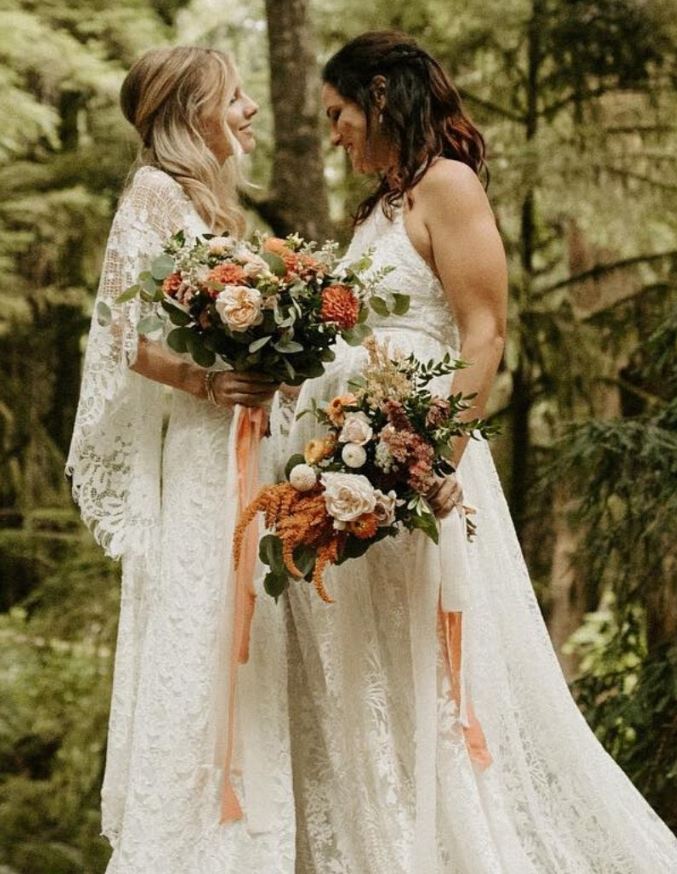
One beauty of pagan wedding ceremony traditions is their inherent inclusivity and flexibility. Unlike many mainstream religious traditions, Paganism embraces a wide range of beliefs, practices, and cultural backgrounds. This allows couples to craft ceremonies that truly resonate with their unique identities and values, promoting wedding equality, inclusion, and representation.
For couples from diverse cultural or religious backgrounds, pagan wedding ceremony traditions offer a canvas upon which they can weave together elements from their respective traditions, creating a harmonious tapestry that celebrates their heritages while forging a new path.
Similarly, couples from the LGBTQ+ community often find solace and acceptance within the realm of Pagan spirituality, where gender norms and societal expectations are transcended in favor of a more fluid and inclusive approach to love and commitment.
The flexibility of pagan wedding ceremony traditions also allows couples to personalize their ceremonies in ways that truly reflect their unique love story and the values they hold dear. The possibilities are limitless, whether incorporating beloved poems, honoring cherished family traditions, or creating entirely new rituals with personal significance.
By embracing diversity and encouraging personal expression, pagan wedding ceremony traditions offer a truly transformative experience that celebrates the richness of human knowledge and the boundless potential of love to transcend boundaries and unite souls in a sacred union.
Pagan Wedding Attire: Embracing Nature's Beauty
Just as the ceremonies themselves are steeped in symbolism and reverence for the natural world, the attire worn by couples and guests at pagan weddings often reflects this deep connection to nature's beauty and majesty. The wedding dress frequently embodies these elements.
For the bride, traditional white gowns may be adorned with intricate embroidery or embellishments that evoke the imagery of the natural world, such as vines, flowers, or celestial motifs. Some may forgo the white gown altogether, opting for vibrant hues that reflect the changing seasons or the particular deities being honored.
Grooms may don garments that reflect the rugged beauty of the earth, such as tunics or cloaks crafted from natural fibers or adorned with intricate knotwork or rune designs. In some traditions, the groom may carry a ceremonial sword or staff, symbolizing his role as a protector and provider.
Guests, too, may choose to embrace the spirit of the occasion by donning attire that celebrates the natural world. Flowing dresses or tunics in earthy tones, adorned with floral crowns or intricate jewelry crafted from natural materials, are familiar sights at pagan weddings.
Beyond the visual aesthetics, the attire worn at pagan wedding ceremony traditions often holds deeper symbolic meaning. It honors the divine energies of the natural world and the sacred union being celebrated, adding layers of wedding symbolism and meaning.
Embracing the Future: Pagan Wedding Ceremony Traditions in the Modern World
As the world continues to evolve and embrace a more diverse tapestry of beliefs and traditions, pagan wedding ceremony traditions are poised to play an increasingly prominent role in the modern landscape of nuptial celebrations.
With their emphasis on personal expression, reverence for the natural world, and the celebration of love in all its forms, these ancient rituals offer a refreshing alternative to couples seeking a deeper spiritual connection and a more authentic reflection of their values and identities, making them a popular choice for alternative wedding services.
Moreover, the inherent flexibility and inclusivity of pagan wedding ceremony traditions make them accessible to a wide range of individuals, regardless of their cultural or religious backgrounds. This openness to diversity and personal expression resonates deeply with the values of modern society, where individuality and self-expression are celebrated and embraced.
As more couples seek to infuse their wedding ceremonies with meaning, symbolism, and a connection to the natural world, the rich tapestry of pagan wedding ceremony traditions will continue to captivate and inspire. Whether it's the ancient ritual of handfasting, the symbolic leap of jumping the broom, or the invocation of deities and spiritual guides, these wedding rituals offer a powerful means of honoring love, commitment, and the enduring bonds that connect us all to the rhythms of the earth.
In a world that often feels disconnected from the natural world, pagan wedding ceremony traditions serve as a powerful reminder of our innate connection to the cycles of nature and the cosmic forces that govern our existence. By embracing these ancient rituals, couples can forge a more profound connection with one another and the very fabric of the universe, creating a sacred union that transcends the boundaries of time and space.
